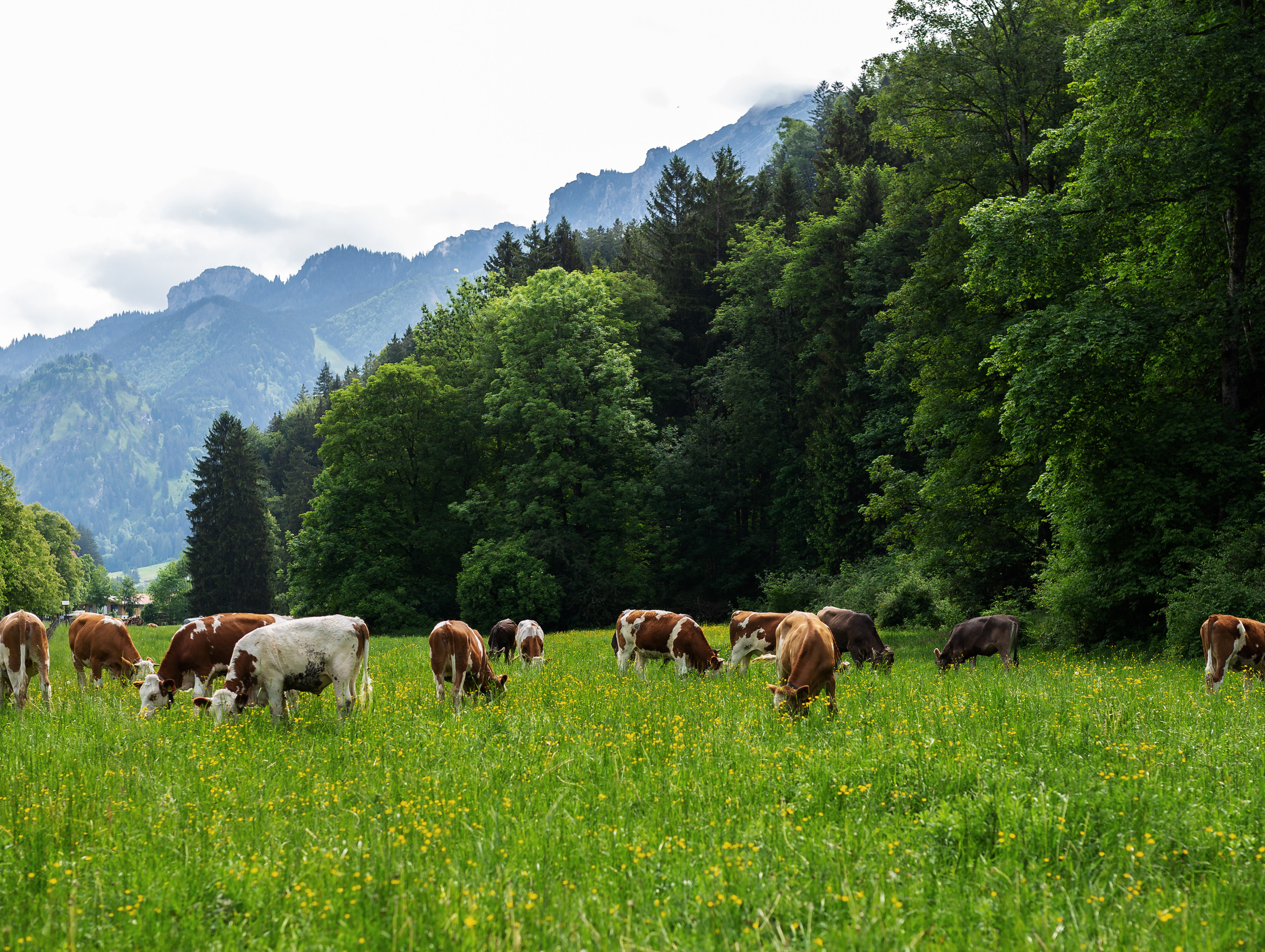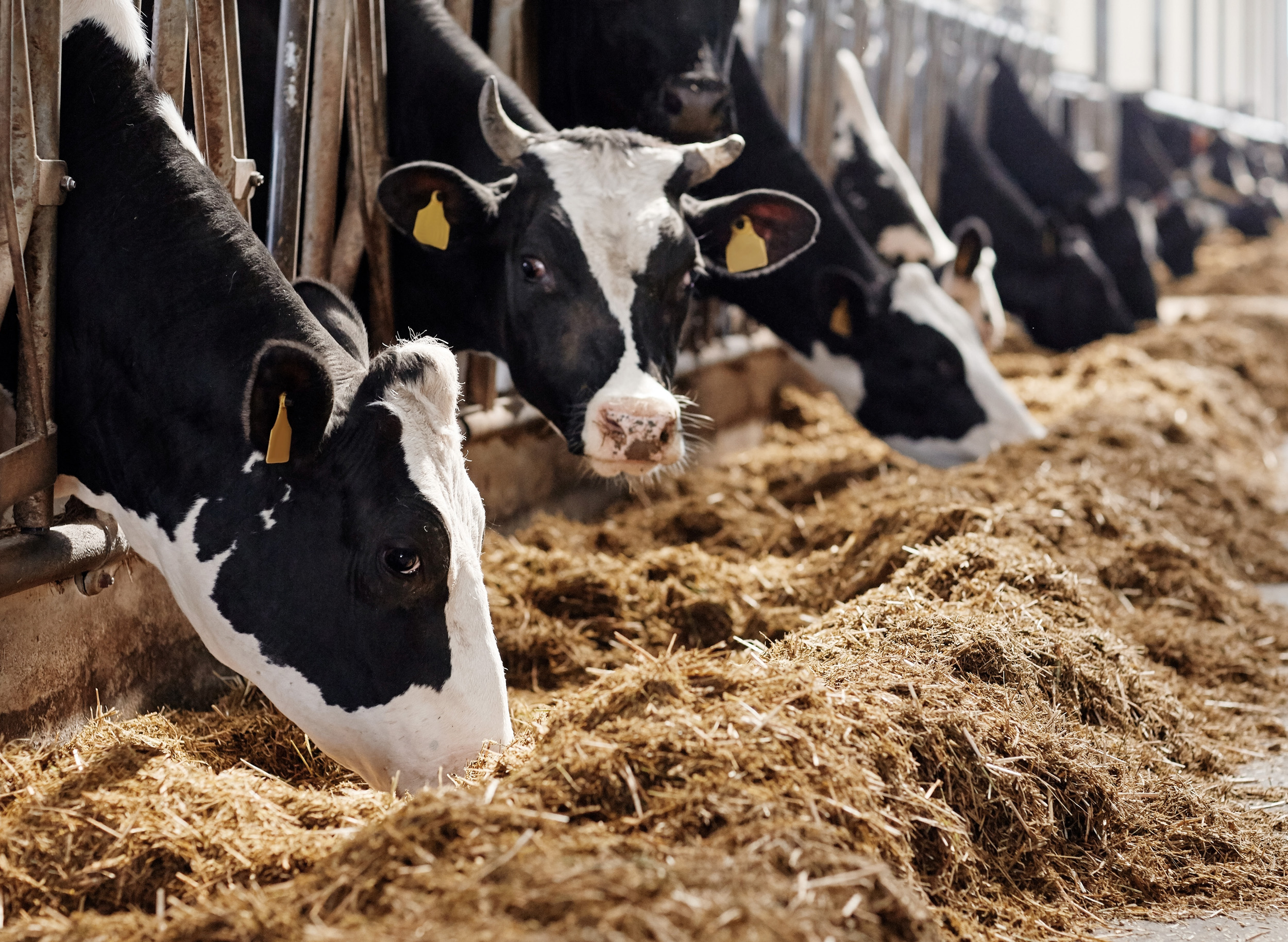Pasture
 Cows grazing in summer pasture in the Austrian Alps
Cows grazing in summer pasture in the Austrian Alps
According to dairy farmer Rupert Cyster (interviewed in lesson 1.6), a balance of nutrients in a cow’s diet leads to milk with superior qualities for producing milk foam for latte art. Farmers usually provide three types of feed to their cows, year-round where possible: pasture, silage, and cake.
Because cows are big animals and their hoofs churn up the pasture when it is wet, most cows spend the wettest months of the year (i.e., the winter months) indoors. This is an important time for the dairy farmer to manage soil nutrition. Grass is one of the most valuable assets of a dairy farm because it is the primary source of food for the cows. Just as on a coffee farm, the soil on a dairy farm inputs need to be balanced and sustainable, with the aim of producing great pasture. A combination of heavy rain and hoof tracks can damage pasture and lead to erosion. But during the winter, cows eat silage, a fermented, high-moisture form of animal feed instead.
Silage — Sauerkraut for Cows
 A herd of Holstein Friesians eating silage in cowshed on dairy farm
A herd of Holstein Friesians eating silage in cowshed on dairy farm
Cows need vitamins and minerals for good nutrition, and these can normally be found in fresh grass. During the warm, dry months, the farmer will make silage which is simply pickled grass. It’s not quite as full of nutrients as fresh grass, but the probiotic nature of this food makes it great for the cow’s digestion. Even if fresh pasture is available, some farmers feeds silage to their cows year-round because of the dietary benefits to the cow’s gut bacteria.
When you make sauerkraut, you need to give the shredded cabbage a good massage in order to release its juices. You then cover this mixture with whole cabbage leaves and apply weights to it to remove as much oxygen as possible.